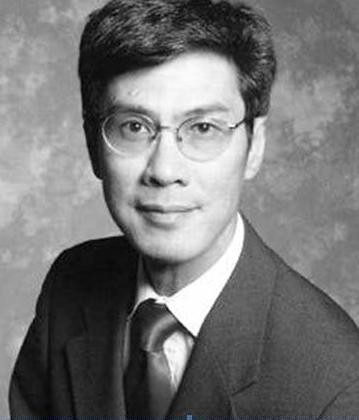
Tiến Sĩ Định Nguyễn
Một Khoa Học Gia Gốc Việt, Tiến Sĩ Định Nguyễn, hiện là Trưởng Công Trình Nghiên cứu Chế tạo loại Vũ khí mới mang tên Free Electron Laser (FEL). Đây là loại Vũ khí mới để phá huỷ Hoả Tiễn tấn công của đối phương, kể cả Hoả Tiễn DF-21D của Trung Cộng hiện đang đe doạ các Hàng Không Mẩu Hạm và các Chiến Hạm Hải Quân Hoa Kỳ.
Trong bản Tường Trình trước Quốc Hội Hoa Kỳ [CRS Report for Congress] của Ronald O’ Rourke ngảy 21 tháng 1 năm 2011, trang 38 có tường trình về Công trình nghiên cứu và sáng chế Vũ khí mới Free Electron Laser (FEL) program của Tiến Sĩ Định Nguyễn.
Trung Cộng đang ngạo mạn phô trương sức mạnh của Hoả Tiễn DF-21D, đe doạ các Hang Không Mẫu Hạm Hai Quan Hoa Kỳ! Nhưng họ đâu ngờ một loại Vù Khí mới mang tên Free Electron Laser (FEL) cùa TS Dinh Nguyen sẽ phá huỷ dược DF-21D, làm tiêu tan tham vọng Đại Hán của ho !
Tuy Free Electron Laser đang còn trong giai đoạn nghiên cứu, nhưng rất khả quan. Các Chiến Hạm Hải Quân Hoa Kỳ sẽ được trang bị sau này khi công trình sáng chế loại Vũ khí mới này thành công.
---------------------------
Breakthrough in free-electron laser development
Breakthrough in free-electron laser development
Breakthroughs in Free-Electron Laser (FEL) technology could mean a virtually impenetrable defense system for Navy ships. The laser weapon in development has the capability to detect and engage incoming cruise missiles at the speed of light without running out of ammunition. The Office of Naval Research (ONR) has been developing the anti-aircraft and missile directed-energy weapon since the 1980s with the goal of creating a megawatt (1 million W) laser weapon with continuous power.
The high-powered FEL uses a superconducting electron gun powered by a microwave tube to emit an intense emission of laser light. Last month, scientists at Los Alamos National lab demonstrated their capability to produce the necessary electrons needed to actuate megawatt laser beams. This development placed its researchers nine months ahead of schedule for its 2011 goals. In a news release, Dr. Dinh Nguyen, senior project leader for the Free Electron Laser program at the New Mexico lab said, “Until now, we didn’t have the evidence to support our models.”
Asides from its military applications, FEL has also been employed in the medical field. Research by Dr. Glenn Edwards and colleagues at Vanderbilt University’s FEL center in 1994 found that FEL could be used to excise sensitive tissues like skin, cornea, and brain tissue at wavelengths of approximately 6.45 micrometers. The technology is still being researched and improved upon to minimize and ultimately prevent collateral damage to adjacent tissue.
Quentin Saulter, research program officer at ONR said “the FEL is expected to provide future U.S. Naval forces with a near-instantaneous laser ship defense in any maritime environment throughout the world. produced by the ONR, Saulter mentions that the project’s workforce consists of experts that specialize in projection, accelerators, electron beam dynamics, and photo-optics.
Sarwat Chappell, research program officer at Air Warfare and Naval Weapons Applications described the FEL as versatile because of its ability to be tuned and generate multiple wavelengths the navy will need when encountering various scenarios across the world.
ONR aims to test the FEL at sea by 2018.
(sưu tầm)

No comments:
Post a Comment